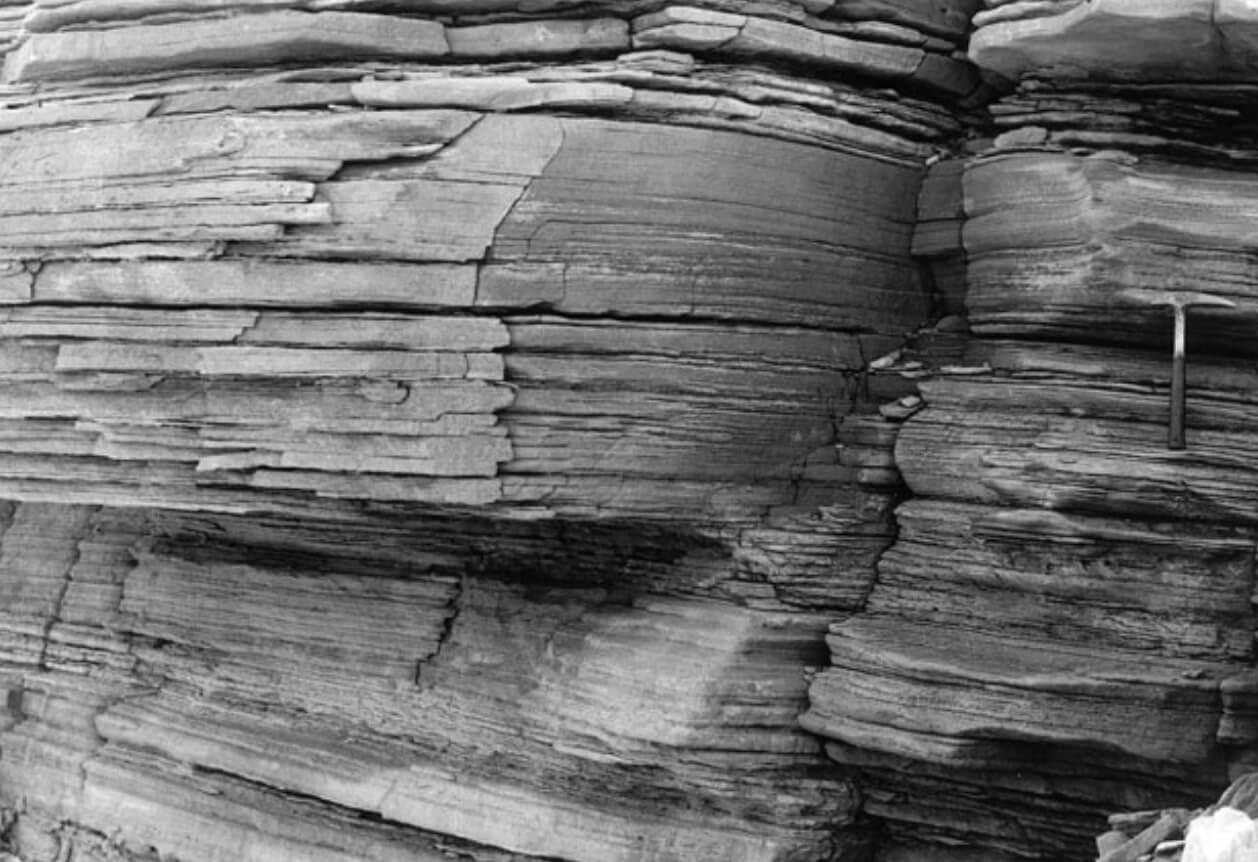
How to Cite
Share
Abstract
The Upper Bajocian – Upper Volgian succession of the Jameson Land Basin in East Greenland forms an overall transgressive–regressive cycle. The Upper Callovian – Middle Oxfordian Olympen Formation represents the first regressive deposits after maximum flooding in the Middle to early Late Callovian. The formation was deposited during two southwards progradational phases separated by a major drowning event in the Early Oxfordian. The first phase was marked by incoming of massive slope and base-of-slope sand (Athene Member), but the delta front and top did not reach the area of present-day exposure. The second phase was initiated by deposition of a thick mud succession (Hades Member) indicating that the delta had shifted far to the north during the drowning event. Southwards progradation of the delta was heralded by gully erosion and the deposition of lenticular bodies of massive slope sand; on this occasion, medium- and largescale cross-bedded sand of the delta front and top (Zeus Member) reached the area. The boundary between Middle–Upper Callovian mudstones in the upper part of the underlying Fossilbjerget Formation and the Upper Callovian Athene Member sandstones formed at the turn-around point between sea-level rise and fall. The Athene Member sandstones are interpreted as an undifferentiated falling stage – lowstand systems tract and span a sequence boundary. The top of the Athene Member is the basinal correlative of the transgressive surface. The basal few metres of the overlying Hades Member mudstones represent the transgressive systems tract and a level with organic-rich mudstones is interpreted to represent the maximum flooding zone. The remainder of the Hades Member and the slope sandstones are assigned to the highstand systems tract. The succeeding cross-bedded delta front sandstones of the Zeus Member are placed in the falling stage systems tract and their sharp base is interpreted as a marine regressive surface of erosion. Comparison of this history with published sea-level curves suggests that the short term changes may be eustatic in origin including the Middle Callovian maximum flooding (K. jason – lower P. athleta Chronozones), Late Callovian regression (P. athleta – Q. lamberti Chronozones), latest Callovian – Early Oxfordian flooding (Q. mariae – C. cordatum Chronozones) and late Early – Middle Oxfordian regression (C. densiplicatum Chronozone).
How to Cite
Share
Downloads
Editors: Jon R. Ineson and Finn Surlyk
The Jurassic rocks of Denmark and East Greenland record the evolution of two discrete portions of the Mesozoic rift complex, now separated by the North Atlantic Ocean. The Jurassic of Denmark and adjacent areas occurs mostly in the subsurface and research has thus focussed [...]










